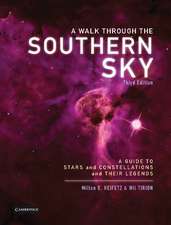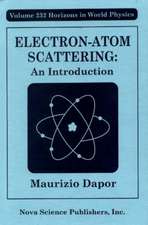Soft Matter under Exogenic Impacts: NATO Science Series II: Mathematics, Physics and Chemistry, cartea 242
Editat de Sylwester J. Rzoska, Victor A. Mazuren Limba Engleză Paperback – 14 mai 2007
| Toate formatele și edițiile | Preț | Express |
|---|---|---|
| Paperback (1) | 954.31 lei 6-8 săpt. | |
| SPRINGER NETHERLANDS – 14 mai 2007 | 954.31 lei 6-8 săpt. | |
| Hardback (1) | 960.42 lei 6-8 săpt. | |
| SPRINGER NETHERLANDS – 16 mai 2007 | 960.42 lei 6-8 săpt. |
Din seria NATO Science Series II: Mathematics, Physics and Chemistry
- 18%
 Preț: 1272.32 lei
Preț: 1272.32 lei - 15%
 Preț: 644.30 lei
Preț: 644.30 lei - 18%
 Preț: 1848.33 lei
Preț: 1848.33 lei - 18%
 Preț: 1235.76 lei
Preț: 1235.76 lei - 15%
 Preț: 649.87 lei
Preț: 649.87 lei - 18%
 Preț: 957.75 lei
Preț: 957.75 lei - 15%
 Preț: 656.58 lei
Preț: 656.58 lei - 18%
 Preț: 1235.43 lei
Preț: 1235.43 lei - 18%
 Preț: 960.13 lei
Preț: 960.13 lei - 18%
 Preț: 1225.79 lei
Preț: 1225.79 lei - 15%
 Preț: 666.41 lei
Preț: 666.41 lei - 18%
 Preț: 1835.07 lei
Preț: 1835.07 lei - 15%
 Preț: 640.71 lei
Preț: 640.71 lei - 18%
 Preț: 954.45 lei
Preț: 954.45 lei - 18%
 Preț: 1227.36 lei
Preț: 1227.36 lei - 15%
 Preț: 646.11 lei
Preț: 646.11 lei - 18%
 Preț: 948.61 lei
Preț: 948.61 lei -
 Preț: 400.10 lei
Preț: 400.10 lei - 18%
 Preț: 959.82 lei
Preț: 959.82 lei - 18%
 Preț: 944.19 lei
Preț: 944.19 lei - 18%
 Preț: 1838.38 lei
Preț: 1838.38 lei - 18%
 Preț: 1222.49 lei
Preț: 1222.49 lei - 18%
 Preț: 939.94 lei
Preț: 939.94 lei - 18%
 Preț: 950.66 lei
Preț: 950.66 lei - 18%
 Preț: 957.44 lei
Preț: 957.44 lei - 15%
 Preț: 656.74 lei
Preț: 656.74 lei
Preț: 954.31 lei
Preț vechi: 1163.80 lei
-18% Nou
Puncte Express: 1431
Preț estimativ în valută:
182.61€ • 191.14$ • 151.99£
182.61€ • 191.14$ • 151.99£
Carte tipărită la comandă
Livrare economică 01-15 aprilie
Preluare comenzi: 021 569.72.76
Specificații
ISBN-13: 9781402058714
ISBN-10: 1402058713
Pagini: 476
Ilustrații: XV, 479 p.
Dimensiuni: 155 x 235 x 26 mm
Greutate: 0.7 kg
Ediția:2007
Editura: SPRINGER NETHERLANDS
Colecția Springer
Seria NATO Science Series II: Mathematics, Physics and Chemistry
Locul publicării:Dordrecht, Netherlands
ISBN-10: 1402058713
Pagini: 476
Ilustrații: XV, 479 p.
Dimensiuni: 155 x 235 x 26 mm
Greutate: 0.7 kg
Ediția:2007
Editura: SPRINGER NETHERLANDS
Colecția Springer
Seria NATO Science Series II: Mathematics, Physics and Chemistry
Locul publicării:Dordrecht, Netherlands
Public țintă
ResearchCuprins
General Issues.- Asteroid impact in the black sea; a black scenario.- The conductivity of hydrogen in extreme conditions.- Dynamic crossover and liquid-liquid critical point in the TIP5P model of water.- Amorphization of ice by collapse under pressure, vibrational properties, and ultraviscous water at 1 GPa.- Coupled ordering in soft matter: competition of mesoscales and dynamics of coupled fluctuations.- All standard theories and models of glass transition appear to be inadequate: missing some essential physics.- Glass forming liquids.- Positron annihilation lifetime spectroscopy and atomistic modeling – effective tools for the disordered condensed systems characterization.- Segmental and chain dynamics in polymers.- Isobaric and isochoric properties of glass-formers.- Influence of Differences in Molecular structure on Behavior of and ? Relaxation Processes in Diisooctyl Maleate.- Orientationally disordered glassy phases.- Liquid Crystals.- Glassy dynamics of rod-like liquid crystals: the influence of molecular structure.- Ordering effect on dynamics in glass-forming mixture of liquid crystals.- Nonlinear dielectric spectroscopy near smectic A-smectic C* transition in ferroelectric liquid crystal DOBAMBC.- Confined liquid crystaline 5CB in 2D Thermodynamic Space – Preliminary Dielectric Relaxation Study.- Annihilation of defects in liquid crystals.- Waves at the nematic-isotropic interface: nematic-non-nematic and polymer-nematic mixtures.- Critical Liquids.- Global phase behavior of supercritical water – environmentally significant organic chemicals mixtures.- Properties of water near its critical point.- Fluctuational equation of state and slopes of critical curves near the critical point of solvent.- Combined models of thermophysical properties along thecoexistence curve.- Intermolecular potential for simple liquids and gases in the high pressure region.- Homogeneous nucleation and growth from highly supersaturated vapor by molecular dynamics simulation.- How to generate and measure negative pressure in liquids?.- Indirect methods to study liquid-liquid miscibility in binary liquids under negative pressure.- Bio-liquids and related problems.- Critical properties of soft matter at restricted geometry as emerging problem: fundamentals and biological applications.- Water-biomolecule systems under extreme conditions: from confinement to pressure effects.- Recent progresses in understanding of water interacting with biomolecules, and inside living cells and tissues.- Self-assembly of polypeptides. The effect of thermodynamic confinement.- Coulomb liquids under electric field – application of a new computer simulation method.- Solvation effects in near-critical polar fluids.
Caracteristici
Review discussions matched with new results of all basic soft matter systems is given The discussion is focused on soft matter systems and strong external perturbations (exogenic impacts) Soft matter and exogenic impacts may be the key direction for the modern materials sciences Joins experiments, theory & simulations with applications in nature and technology Multidisciplinary, joining key specialists from different branches of soft matter, and the application of various exogenic impact














